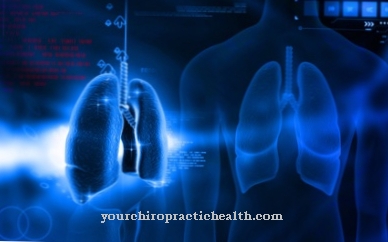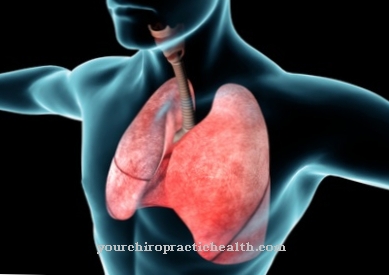The positive feedback is a feedback mechanism within the body. We always speak of positive feedback when the output variable in a control loop has a reinforcing effect on itself. While the negative feedback tries to keep the changes in the variables involved as small as possible, the positive feedback ensures the largest possible changes.
What is the positive feedback?

The positive feedback is also known as the positive feedback mechanism. With the help of positive feedback, certain variables are continuously corrected within a control loop. While with negative feedback the end product has an inhibiting effect on the output variable in a control loop, with positive feedback there is an inherently continuous gain.
Processes in which positive feedback plays a role start rather slowly and then quickly become more intense. In the case of physiological positive feedback, there is a stop signal which brings the process to a standstill. This is not the case with pathological positive feedback mechanisms, so that a vicious circle, the vicious circle, occurs.
Function & task
Compared to negative feedback, the positive variant is rarely found. An example of a desired positive feedback mechanism is the build up of the potential in the excitation conduction. The higher the incoming potential, i.e. the stimulus that occurs on a nerve cell, the more sodium ion channels are opened. The more ion channels that are opened for sodium, the higher the action potential becomes.
Another example of positive feedback is the stomach's response to toxins. Normally, the muscles of the stomach contract evenly at regular intervals and then relax again. In this way the food is gently mixed. When a toxin is registered, a positive feedback loop leads to a strong contraction of the stomach. This pushes the stomach contents backwards through the esophagus towards the mouth and then vomits it up.
Oxytocin is a hormone whose release is controlled, among other things, by positive feedback. Oxytocin plays an important role in milk production (lactation). The suckling movements of the baby on the breast stimulate the release and production of oxytocin. The oxytocin in turn stimulates milk production. If the infant increasingly sucks on the breast, more oxytocin is produced again and the flow of milk is further stimulated. The stopping mechanism here is also the infant. If he does not breastfeed for a long time, the oxytocin level drops and milk production is reduced.
Illnesses & ailments
If the stop signal is absent from a positive feedback loop, a vicious circle is created. Such a vicious circle can be found, for example, in heart failure. Heart failure is when the heart's performance is no longer sufficient to supply the body with sufficient blood. So that the organs and the peripheral regions of the body still receive sufficient blood, oxygen and nutrients, the body activates various adaptation mechanisms. For example, it constricts the blood vessels so that the blood pressure rises and the blood reaches more distant areas. In addition, the so-called renin-angiotensin-aldosterone system is activated. This recovers more water in the kidney. This also results in an increase in blood pressure.
Activating the sympathetic nerve increases the heart rate and the contraction force of the heart as much as possible. As a result, the body is actually better supplied initially, but the increased blood pressure and the increased heart activity put a strain on the already weakened heart and sooner or later lead to a worsening of the situation. The compensation mechanisms are then strengthened, which in turn damage the heart in the long term. In the worst case, this vicious cycle makes a heart transplant inevitable.
Another example of dangerous positive feedback is shock. If the shock spiral is set in motion, it can be fatal. The causes of shock can be different. A good example of positive feedback, however, is the volume depletion shock.
A volume shock occurs when the body does not have enough blood volume. This can be the case, for example, after an accident or if you are dehydrated. So-called centralization takes place so that the vital organs are still supplied. This means that the vessels in the arms and legs are placed close together. This means that more blood is available to the internal organs and especially the brain. At first glance, the centralization mechanism makes perfect sense.
Due to the low blood flow, however, acidic metabolic end products are formed in the periphery. So-called acidosis occurs. This leads to a higher vascular permeability and at the same time to a widening of the vessels. As a result, exactly what happens that centralization should actually avoid. The blood sinks in the periphery and is absent from the body's circulation. The shock can cause acute kidney failure, acute lung, or acute liver failure.
Insulin resistance in diabetes mellitus is also based on a vicious circle. The pancreas releases more insulin when you eat. The insulin ensures that the sugar in food gets from the blood to the cells. Due to various factors, the cells of the body can become insulin resistant. In order for the sugar to be absorbed by the cells, significantly more insulin has to be released. Higher insulin levels lead to weight gain, but this increases insulin resistance. This in turn leads to increased insulin release.


.jpg)










.jpg)

.jpg)
.jpg)











.jpg)